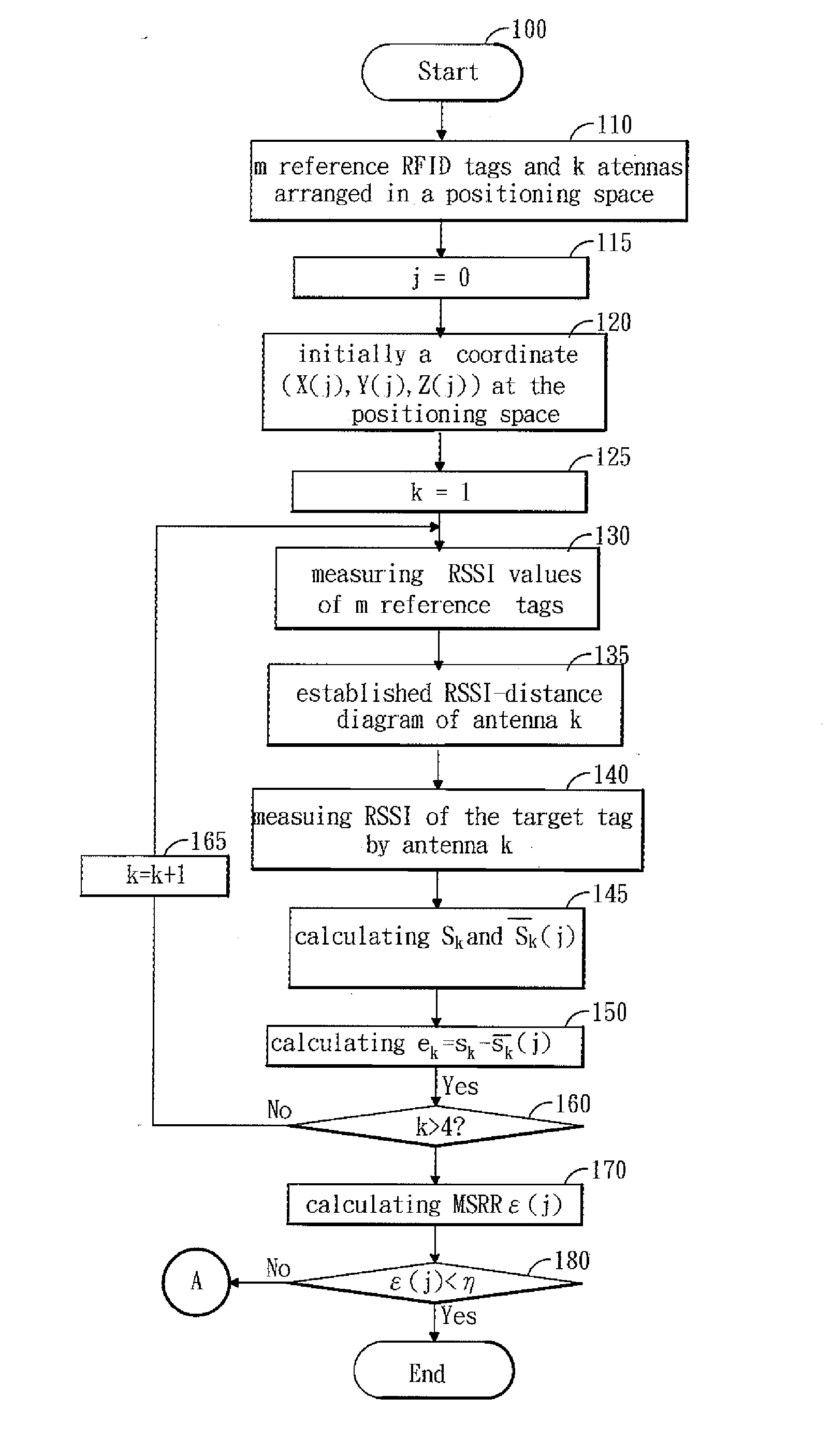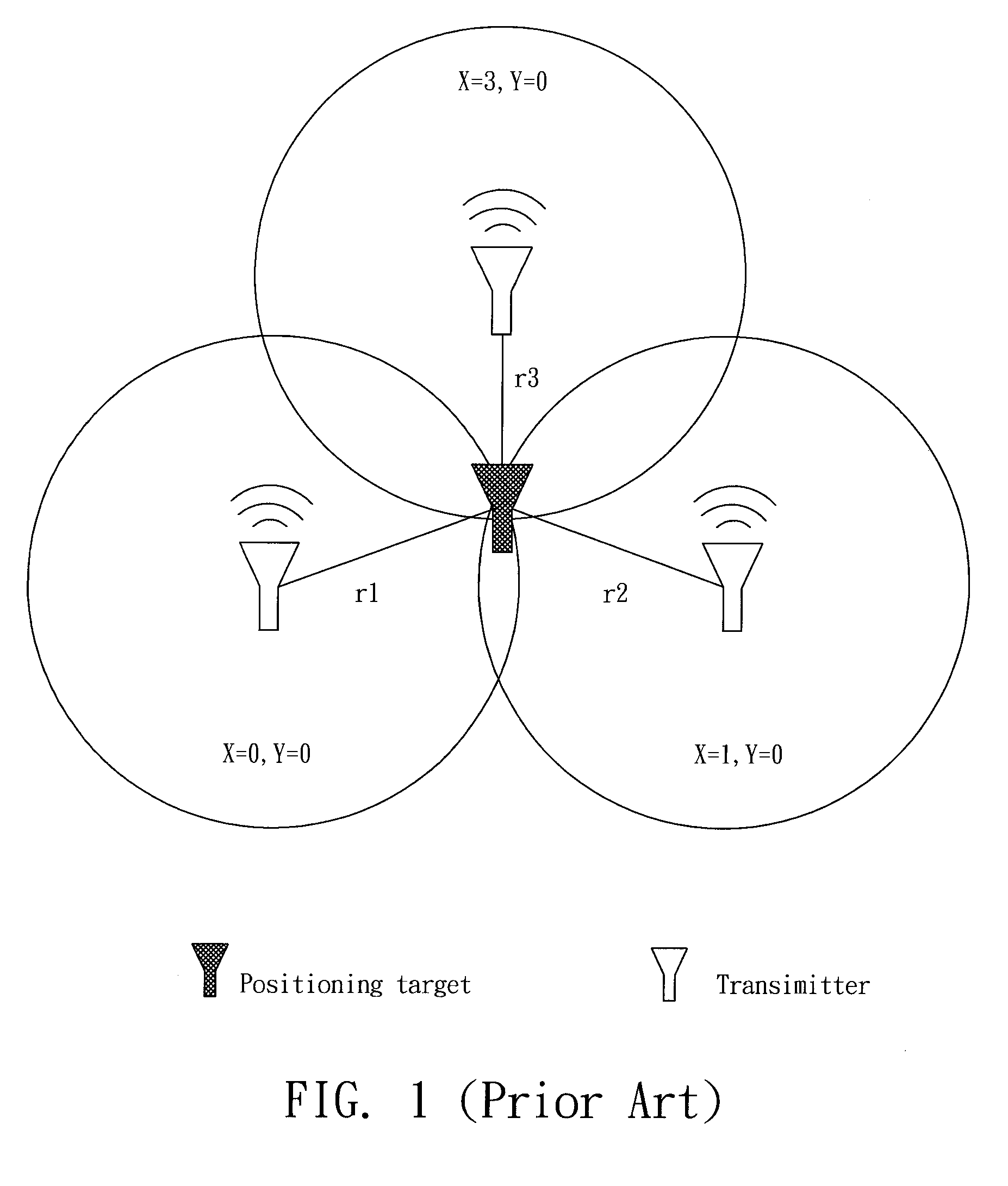Method of Positioning RFID Tags
a positioning method and algorithm technology, applied in the field of rfid tags, can solve the problems of high cost of apparatus installation, high cost of environment interference, and poor performance of ieee 802.11 and zig-bee techniques in positioning, and achieve the effect of saving the iteration time for positioning
- Summary
- Abstract
- Description
- Claims
- Application Information
AI Technical Summary
Benefits of technology
Problems solved by technology
Method used
Image
Examples
Embodiment Construction
[0021]RFID reader including an antenna can be used to read radio frequency strength indicators (RSSI) emitted from the RFID tags. By means of RSSI, the distance can be determined but the precise position is still unknown. Thus as forgoing description in the background of the invention, at least three antennas are needed (but two positions may still occur).
[0022]The present invention utilizes RSSI of the target tag and reference tag to calculate the distance between the reader and the target tag.
[0023]The present invention provides an algorithm called SPA 1.0 thereby spatially positioning the RFID tag. Please refer to FIG. 2. It shows a flow chart according to the algorithm of the present invention.
[0024]The method begins from the step 100. In step 110, n reference tags and m antennas are arranged in an indoor space having a RFID target tag to be poisoned.
[0025]In step 115, let j=0
[0026]In step 120, assuming the coordinate of the target tag is located at (Xi(j),Yi(j),Zi(j)) after ite...
PUM
 Login to View More
Login to View More Abstract
Description
Claims
Application Information
 Login to View More
Login to View More - R&D
- Intellectual Property
- Life Sciences
- Materials
- Tech Scout
- Unparalleled Data Quality
- Higher Quality Content
- 60% Fewer Hallucinations
Browse by: Latest US Patents, China's latest patents, Technical Efficacy Thesaurus, Application Domain, Technology Topic, Popular Technical Reports.
© 2025 PatSnap. All rights reserved.Legal|Privacy policy|Modern Slavery Act Transparency Statement|Sitemap|About US| Contact US: help@patsnap.com



